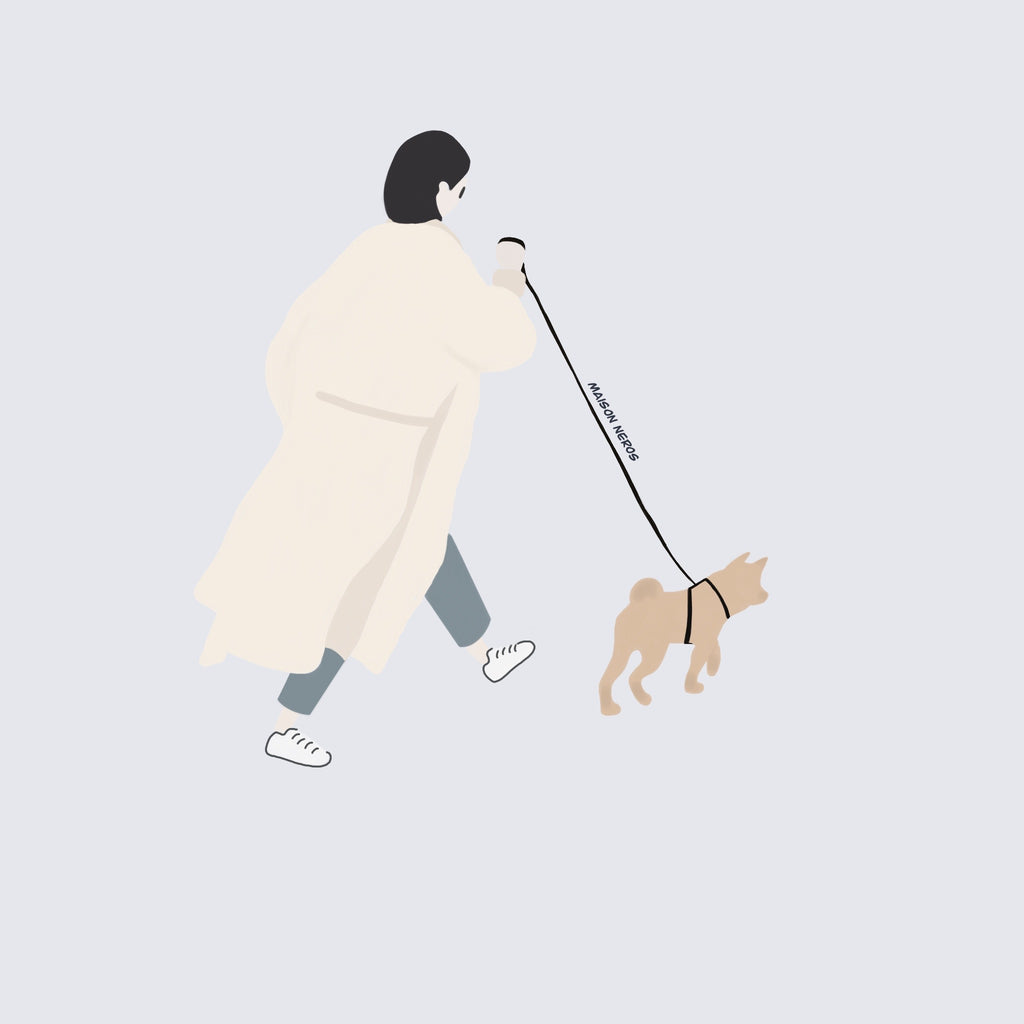How to choose walking gear and harness

There are so many types, shapes and colors of walk gear that it is difficult to choose.
So this time
French osteopathic doctor, Dr. Charlotte Coupé , will introduce how to choose walking gear such as harnesses and collars.
You will find the perfect walk gear for your dog!
From the conclusion, the Y type harness is the best.
Harness and collar (collar).
As for walking with a collar, if the dog doesn't pull it, there is no problem at all.
However, puppies are prone to suffocation, so it's a good idea to switch to a harness if you notice they're having trouble breathing.
Harnesses are more comfortable and easier for us to control.
Two points to consider when choosing a harness
⭐️ Shoulder and front leg bones
⭐️Free range of motion for front legs
Many of the harnesses that have become popular in recent years put too much strain on the dog's shoulder bones and front leg bones.

• The dog's shoulder bone should always be unrestricted. The type of harness that hits the shoulder bone is not good.
If the dog's shoulders are blocked by the harness, the gait will be unnatural and put too much strain on the musculoskeletal system. It is easy to develop arthritis and difficulty walking in the future.

• Avoid touching the harness straps with your elbows. Too much stimulation can cause elbow bone detachment and poor posture with premature joint wear.
Harness straps that are always 2 to 3 fingers away from the dog's front paws are ideal as they are less burdensome.
Therefore, choose a harness that takes into consideration the shoulder blades and front leg bones so that your dog can stay healthy for a long time.
Here are 3 common harness types.
T-type

A T-type harness is also called a Norwegian harness.
The front strap restricts the shoulder's freedom of movement and causes pain when pulled.
When the front band slips, it crushes the trachea just above the sternum.
Easy to put on and a practical harness, no matter the breed or size of your dog, it is likely to get damaged after prolonged use.

H type (H shape when viewed from above)


The basic H type is a classic harness. Good for kids who don't know what to choose.
The H type harness is less likely to transmit shock to the dog's body when pulled, so this type of harness is recommended for dogs with less pulling. However, to avoid chafing behind the elbows of your puppy, you need to adjust it correctly and choose a comfortable material.
Y type


The Y type is the type recommended by French dog osteopathy.
This is because there is no restriction on the movement of the shoulders and the front legs can be moved freely without damaging healthy bones.
Very comfortable for dogs and has good shock absorption. It is easy to control the pulling of the dog, and there is little burden and impact on the dog.
Therefore, using the Y-type harness for comfort and safety, dog osteopathy
recommended from this point of view.
+α Good to be careful here too! !
Harness straps should be against the dog's skeleton (sternum, thoracic vertebrae between shoulder blades) and not soft tissue to avoid injury (burn fibrosis, tendinitis, etc.).
The waist should not touch the dog's shoulders, legs or elbows. Keep at least 2-3 fingers apart.
•The balance of the harness itself is also very important. Some harnesses have fasteners or accessories on only one side.
Needless to say, the part containing the clip weighs more than the opposite part. Dogs are more sensitive than we are. Don't let your body get out of balance and cause discomfort.
•The harness should not be too tight (uncomfortable and risk of injury) or too loose (imbalance or lack of support points).
For smaller dogs such as whippets, be careful not to widen the center band as the friction between the front legs can easily cause irritation.
• And finally, the harness should be light and not too stiff.
Whether you use collars or harnesses, the most important thing is that your dogs are comfortable and happy.
Please use this as a reference when choosing a harness! !
Reference article
Le Maître des Lieux «Comment choisir son harnais»
Charlotte Coupé , Ostéopathe Animalière intervenant sur Paris.
